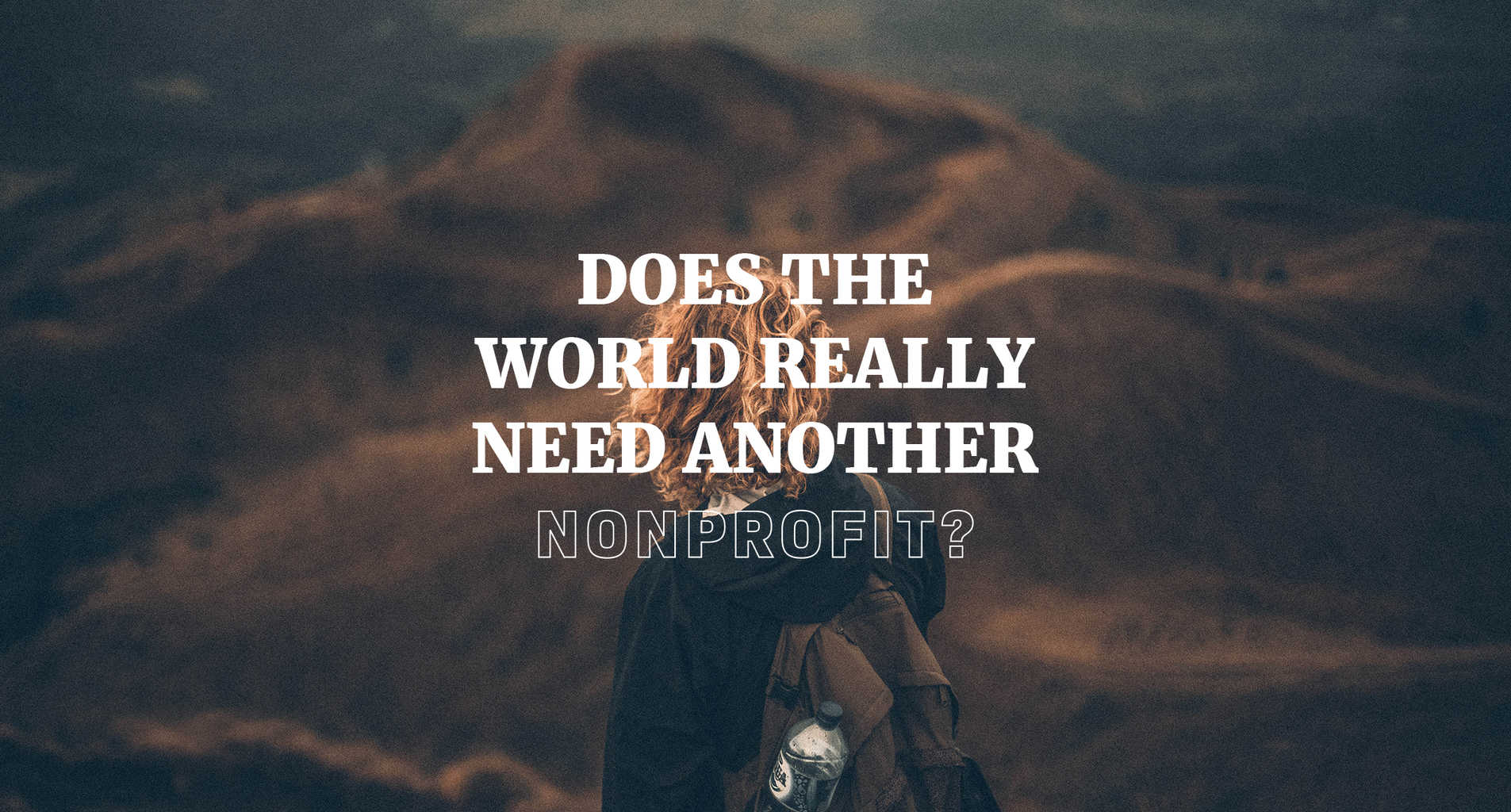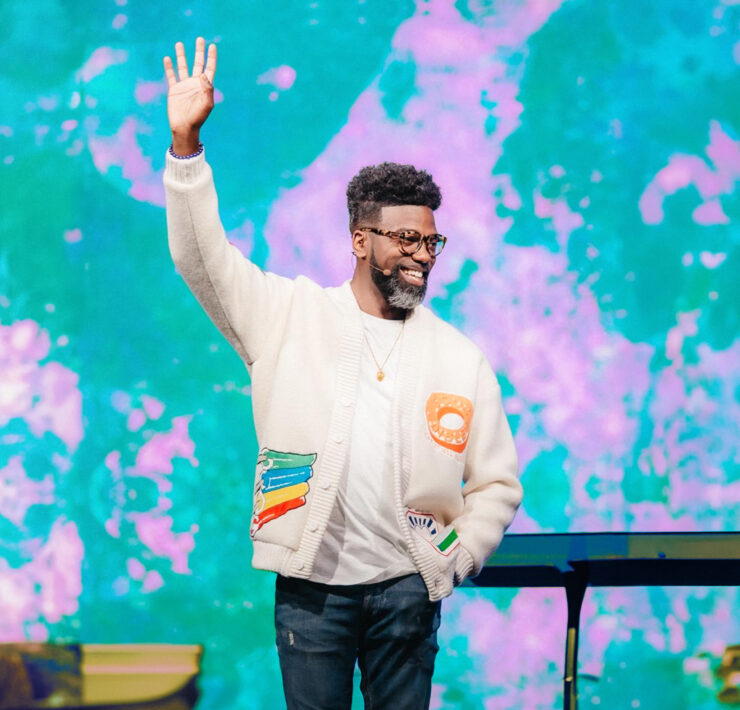
When Liz Bohannon traveled to Uganda in the summer of 2011, she knew she wanted to make an impact. Though the purpose of the trip was initially journalistic, she soon realized she wanted to help the women she met in the country.
Many of them were smart and talented, but simply didn’t have the resources to go to college or set a clear path to succeed professionally. Bohannon’s immediate impulse was to figure out how to help them through a nonprofit organization.
“The only kind of framework I had for thinking about how to make a positive impact was like, ‘Oh, some sort of charity or humanitarian aid organization or sponsorship program,’” she explains. “Those were the only models I was aware of. So I just kind of assumed that if I wanted to make the world a little bit better, I would have to do it in the nonprofit space.”
 Her background in journalism made her question how the nonprofits she encountered were operating so she could understand the real long-term impact they were having in women’s lives. What she found startled and challenged her.
Her background in journalism made her question how the nonprofits she encountered were operating so she could understand the real long-term impact they were having in women’s lives. What she found startled and challenged her.
“To be totally honest, I kind of went through a season of disillusionment,” she remembers.
Not only were many of the nonprofits she encountered only focused on short-term results, they also fostered a dynamic between donors and the people they were helping that Bohannon saw as deeply problematic.
As she learned more about the relational dynamics that existed between Westerners and Ugandans in the nonprofit and aid sectors, she remembers thinking, “I don’t think I could be a part of something like this.”
“I am of the firm belief that the way God’s Kingdom works—the most beautiful part of it—is that there are givers and there are receivers. And that’s supposed to be a really fluid thing,” she says. “Because, it’s like, sometimes I’m the giver, and you’re the receiver.And then the tables turn, and the seasons switch, and you’re able to meet my needs in this really beautiful way. And there’s this ebbing and flowing of giving and receiving to this co-dependency that we have with each other.”
Instead, the relational dynamics she witnessed seemed totally one-sided.
“A lot of what’s happened over the last several decades is that the ebb and flow of that has been completely cut off, and it’s like, ‘Oh no, you’re an African, that means you’re the receiver,’” she explains. “I’m an American, I’m a Westerner, so I’m the giver. Therefore, that’s my identity over here on the giving side. Your identity is in the receiving side. I think it’s actually incredibly dehumanizing to kind of create a cemented, permanent identity for somebody—both for the Africans and for the Americans.”
The experience eventually led her to start Sseko Designs, a fashion and footwear brand that not only employs women in East Africa—allowing them to earn an income and break cycles of poverty—but also helps provide them with college scholarships that foster entrepreneurialism in their own communities.
After moving to Uganda, living among the people she wanted to help and learning the dynamics of the problems they were facing, she decided starting a nonprofit simply wasn’t the best way to get involved.
However, her impulse—launching a nonprofit organization to solve the world’s problems—is a common one. Not only are millennials entrepreneurial—49 percent plan to start their own businesses within the next three years—but 94 percent of millennials want to use their skills to benefit a cause, according to The Society for Human Resource Management.
 “It’s almost like a euphemism or a go-to for people, like, ‘Yeah, I want to do my thing, or I want to have a career, but then I eventually want to start a nonprofit,’” says Kohl Crecelius. “Yeah, but do you really? What are you trying to accomplish?”
“It’s almost like a euphemism or a go-to for people, like, ‘Yeah, I want to do my thing, or I want to have a career, but then I eventually want to start a nonprofit,’” says Kohl Crecelius. “Yeah, but do you really? What are you trying to accomplish?”
He’s the founder of Krochet Kids, a hybrid business-nonprofit that also employs women in the developing world to make apparel and helps them achieve better lives.
He says in the 10 years since the founding, he’s met dozens of people who want to launch nonprofits, but don’t understand the commitment it entails. “If you’re not willing to make a long-term commitment to living or being in Africa, you probably shouldn’t go to Africa,” he says.
Like Bohannon, he says it’s critical to truly understand the problem facing the people you desire to help. But finding out if something really is needed, understanding the needs on the ground and actually coming up with a sustainable model to help can be an extremely involved process. Just ask the founder of the world’s most respected nonprofit: The International Justice Mission.
Finding the Need
Gary Haugen was 30 years old, working as a prosecutor at the United States Department of Justice when he was sent on an assignment that would change his life: He went to Rwanda to investigate the genocide that had killed hundreds of thousands.
The experience led to a revelation.
“I just had this sense that if I could do anything in the world, I would do this justice lawyering thing where you are an advocate on behalf of people who don’t have a voice and who are being abused by others,” he says. “I also thought I would love to be able to render that kind of service in the developing world where the situations are most desperate and there are so few resources for those who are poor. And thirdly, I would love to do that as an expression of my Christian faith and in community with other followers of Jesus.”
As an experienced lawyer who had already made his way into the highest levels of government, Haugen’s initial plan was to find a nonprofit and get involved.
“I think this is a reasonable thing to then say, ‘Well, maybe I could go work for that organization,’” he explains. He and his brother, a pastor, began looking for an organization that was helping those suffering from violence, but they couldn’t find anything.
“Isn’t this strange that there’s a Christian response to almost every kind of need amongst the poor—if it’s a lack of food or lack of fresh water or housing or medical care or education—but what if the problem is violence?” he says.
For the next three years, Haugen studied the problem of violence against impoverished communities, looking for others who were trying to make a difference, learning what it took to start a nonprofit and honing his legal skills—all while maintaining his full-time job.
Finally, four years after he first landed in Rwanda and saw firsthand how desperately the world needed an organization to advocate on behalf of victims of violence, he founded what today is known as IJM.
Today, the organization employs more than 750 people in offices globally and has helped more than 40,000 people facing oppression.
“I am so immensely grateful for all of the development that had proceeded, professional development and a little bit of maturity because I was actually way over my head getting started,” he admits.
What he learned in the years it took to start IJM was, first and foremost, to be clear on what you personally are setting out to achieve. And it all starts with asking three major questions.
“I’ve talked to … young people who are interested in starting a nonprofit, and I generally tell them there are really just three questions you need to ask, and these are the three questions I found myself asking,” he explains.
Is There a Need?
“Almost every nonprofit is supposed to be in response to a need, but you have to really ask yourself that question,” he explains. “Because it sometimes turns out that we can almost make up a need because there’s something we like to do.”
It’s a question that Bohannon wrestled with early on when she looked at the work being done by organizations in Uganda. “The reality is, 90 percent of the problems that these nonprofits are seeking to solve, would be solved if the people they are seeking to serve had jobs,” she says. Essentially, many misidentified the need. It wasn’t just feed the hungry—it was help people to be able to support themselves and their families.
Crecelius says it’s also key to truly understand the need by involving yourself in the community you want to help. “Wherever that community is you want to serve, my encouragement is get there, be there and listen before you make plans,” he says. “Far too often the case is like … ‘I have a heart for inner-city youth, so I’m going to create a program and go implement it, but I didn’t grow up in that context’ or ‘I don’t know what specifically the needs are. I’m creating a program in a vacuum and I’m not actually understanding its correlation to the people I’m wanting to serve.’”
Bohannon agrees. “The No. 1 most important thing you can do specifically in the beginning stages of anything is to have the courage to ask really, really hard questions and to shut up and actually listen to the answer.”
Is Someone Else Meeting That Need?
Haugen says that once you understand the need, the next step is to see if there are other organizations or people doing something already and “then just join that effort.”
“Are there organizations in those communities that you should be partnering with or learning from? If there are, jump in and help them,” Crecelius says. “Even if the end result is you help them and realize where there were inefficiencies and you start something else, that’s great.”
Krochet Kids employs women in Uganda and Peru who make the clothing and accessories they sell. Their names are then written on the inner tags of hats and apparel so customers know whose life is being affected. In a way, that comes back to finding someone meeting a need—women in developing countries who want to work to provide for their families—and walking beside them.
“One of my encouragements is always, if you make products or you know how to do something, find an organization that is doing amazing community development work in the developing world or is working with artisans,” he says.
Specialty gum and candy brand Project 7 partners with organizations around the world to help those in need, and to date, thanks to their efforts, has helped serve more than 4 million meals in the U.S. alone, provided 116,000 malaria treatments, built wells around the world, helped children receive an education and more.
Its founder, Tyler Merrick encourages anyone wanting to make a difference to first link arms with someone else already doing it, and then evaluate whether they still want to strike out on their own.
“There are already a lot of nonprofits that are going and you could be a part of those and help and learn and get experience from those,” he says. “And then, after doing that for a period of time, if you still felt like there was a hole for the particular nonprofit that you had a passion for, you [have] a lot of experience from that kind of work with the other one that you can go, ‘Alright, I’m ready to go do this.’ But just going straight into it … most of the time, it doesn’t work out.”
Crecelius says that it’s critical that no one simply tries to go it alone.
“The most creative minds and successful people in the world, you read their stories and you realize they were typically a part of a team or this community of people that were all pursuing that dream together,” he says.
Can I Add Value?
“Can I actually do something that would make a difference? Because it can also be true that there’s a need and no one else is doing [anything], but I don’t actually have anything I can honestly bring to the table,” Haugen says.
Just because there is a need to be met, it doesn’t mean everyone has the specific skills and resources to do it. But that’s not a bad thing or anything to feel ashamed about.
Merrick says that too often, many millennials—particularly Christians—believe that they are only doing truly good work if they’re doing something outwardly impactful, even if they’re equipped for it.
“That’s a trap and a lie of the enemy that can be the sirens that lure you—that make you think God doesn’t love you where you’re at and you would matter more if you were doing more, if you were doing full-time ministry or nonprofit,” he says. “I would try to tell a young person that’s in that place of ‘I want to come out of college and I want to work somewhere that matters and I want to do something that’s bigger’ … Well, what does that look like? What is your degree in and why did you get passionate about that in the first place? And what could that look like if you went ahead and pursued that and then what could you do in that field, what could you do in that office?”
Taking the Leap
Bohannon realized that to be most effective, she needed to forgo the traditional nonprofit model and start a business that empowered women.
Haugen witnessed widespread injustice and founded a nonprofit to help people the world was ignoring. After 10 years of running a nonprofit, Crecelius is shifting the model of his brand to a hybrid for-profit to find better ways to serve the women he employs. Merrick’s Project 7 is continuing to learn how to best provide money to its nonprofit partners, while also supplying a great product to his customers.
Each of them has taken different journeys while pursuing their passion to help others, and each has learned their own lessons along the way.
But even with all of the questions they each encourage people to ask and investigate before launching their own organization, Haugen says there’s one singular step that he would tell anyone looking to make a difference to take.
“Talk to God about what it is you’re trying to do, everyday,” he says. “I mean it’s amazing you can be doing this thing, especially if you’re a Christ follower. You’re actually probably trying to do this meaningful thing because you think it’s what God wants done in the world and it’s service to Him. The amazing capacity is for us to not actually talk to Him about it.”
Haugen says if you truly seek God, ask the right questions and partner with the right people, then there will nothing stopping you from literally changing the world.






















